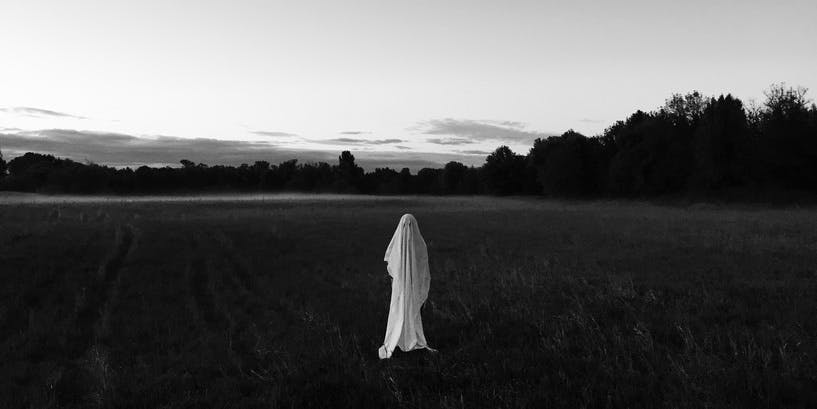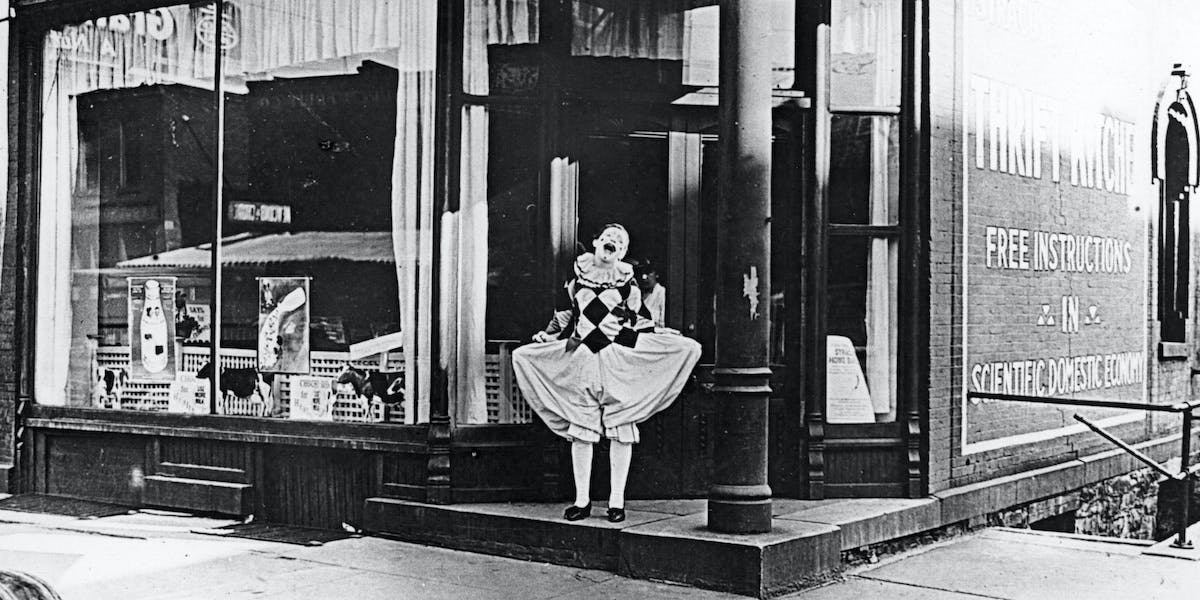
Studies on fear show we love to be afraid

Topics
About 100 years ago, Cho-Cho the Health Clown (above) crossed the country to teach kids about healthy habits like pooping daily + bathing weekly. Cho-Cho didn’t evoke fear and anxiety in the kids. Instead, the kids loved Cho-Cho—so much so that the clown who played him made about $900,000 annually (by today's $).
Then, clowns dramatized their makeup to be seen by larger circus audiences. Up close, their surreal expressions now terrified adults and kids alike. Today, 50% of adults are afraid of them.
This week, let's dig into our fascination with fear. What is morbid curiosity? How does it explain our love of horror movies... and conspiracy theories? And how can our heart rate help us choose the scariest movies of all time? Grab a treat + scroll down. Then keep scrolling for cold-care tips + more health news.
- The Checkup: tricks for a good life
- Fright Side of Life: why we love to be afraid
- Healthcare:food + drugs + long colds
The Checkup
- Is pumpkin healthy? Here’s why + when + how to eat it
- Police are using facility dogs to help calm trauma victims
- These fiber sources can encourage Ozempic-like effects
- How bacteria spew when we blow out birthday candles
- These people exorcised the exes still haunting them
- This dead bug exercise boosts core muscle strength
- How much booze you drink matters for satisfying sex
- How gross is it to keep sleeping with a yellowed pillow?
- Treats blackened by activated charcoal mess up medication
Love watching scary movies?

According to behavioral scientist Dr. Coltan Scrivner, most humans have a moderate amount of morbid curiosity, which Scrivner defines as “a curiosity or interest in potentially dangerous things.”
Why? Because watching horror movies or exploring haunted houses help us face our fear and learn about ourselves. We may discover that we have a low fear threshold and so take few risks in life. Or we may become more confident in how we’d handle a potential threat or scary situation. (Zombie defense skills, anyone?)
We’re also excellent at regulating the physicality of our fear. We contain it by covering our eyes during the scariest parts of a film or encourage it by turning lights off before we watch.
How morbidly curious are you? Take the Morbid Curiosity Test. It rates curiosity across four areas: the minds of dangerous people, violence, the paranormal and body violation. Then watch The Autopsy of Jane Doe—Scrivner’s top pick for all four morbid curiosities in one film.
Your heart fears these horror films the most!

For The Science of Scare Project, researchers put our love/fear of scary movies to the test.
First, they attached heart rate monitors to test subject. Then, they tracked heart rates while the participants watched various horror films. A single spike signified a good scare. Longer heart rate variance—the time between beats—marked fight-or-flight stress.
What films did subjects find most scary?
The Exorcism of Emily Rose came in 8th overall. The Conjuring ranked 5th. Head to The Hill to find the top heart-jumping scary films that will rev up your nervous system or help you experience fear at higher levels.
And if you struggle with high blood pressure while not watching something scary…
Explore our online hypertension care
When curiosity gets conspiratorial

A group of researchers found that people with high levels of morbid curiosity are more likely to believe conspiracy theories, choose conspiratorial explanations for mundane scenarios + seek conspiratorial answers for violent situations.
Out of the four morbid curiosity areas, test subjects showed the most interest in "the minds of dangerous people.” Prior research shows that most of us are interested in relationships + social threats. But those who believe in hostile conspiracy theories might have an unhealthy mental health attraction to other humans.
Learn more at The Conversation.
Healthcare 411
Millions of American families struggle to get food on the table, report finds (NPR). 44.2 million people had trouble getting food on the table in 2022—a 31% increase from the year before. The end of pandemic-era programs like the expanded child tax credit, SNAP increase and free school meals are partly to blame, as well as rising housing and food costs. The result has reversed a decade-long decline in food insecurity.
Americans don’t get to have the best new Covid drug (Atlantic). Early research shows that the Japanese antiviral drug Ensitrelvir clears Covid-19 faster than Paxlovid. It works for those not at high risk, too. It’s easier to take. And it doesn't include some of Paxlovid’s irritating side effects. But no research has been done on its impact on hospitalization + death rates. If you're at high risk + within the first 5 days of your symptoms, come to Dr. B for convenient online Covid-19 care!
Are you dealing with a long cold? Here are the 2 biggest signs (HuffPost). Many are dealing with colds that last beyond the expected 3-7 days. Some stick around for weeks. Severe cold symptoms include fever, headaches, nausea, vision changes, face tenderness, stomach pain and diarrhea. Rest, hydrate and use OTC medications for congestion to combat these. Seek medical help if your cold doesn’t go away after a week.
Topics
Sign up for the free Dr. B newsletter for a weekly report on the latest in healthcare + research-based advice for staying healthy and mentally well.